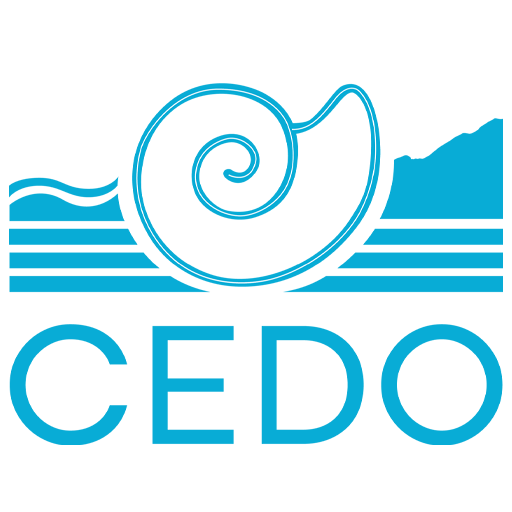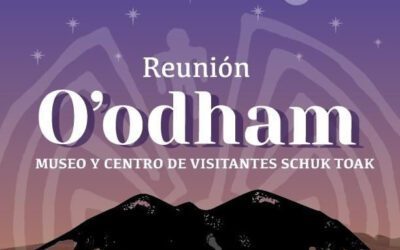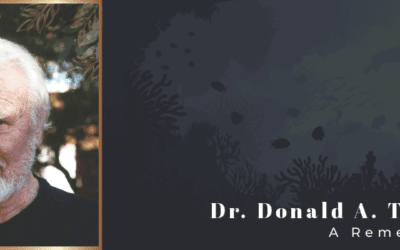[vc_row][vc_column][vc_separator][vc_column_text]By: Dr. Norma Angélica Corado Nava, Content Department in the General Directorate for the Dissemination of Science, UNAM.
.[/vc_column_text][/vc_column][/vc_row][vc_row][vc_column][vc_column_text]Introduction[/vc_column_text][/vc_column][/vc_row][vc_row][vc_column width=”1/2″][vc_single_image image=”1813″ img_size=”full” add_caption=”yes” onclick=”link_image”][/vc_column][vc_column width=”1/2″][vc_column_text]Diving is an underwater activity that can be done for recreational, research or sporting purposes. Diving is divided into two main types: diving without equipment or Freediving and diving with equipment or SCUBA diving. Freediving depends on the person being able to hold their breath and stay underwater, and may or may not require the use of equipment. The equipment required is a visor or mask used to see underwater, a breathing tube or “snorkel”, fins, a weight belt and, sometimes, thermal protection.
Scuba diving or SCUBA (Self-Contained Underwater Breathing Apparatus) is the best known and broadest type of diving. It requires a certain physical and theoretical training that guarantees the participant’s safety. In addition to a visor, fins, a breathing tube and a weight belt, the equipment required for scuba diving includes a tank filled with pressurized air, a vest or buoyancy compensator that functions as the “swim bladder in fish” and allows the diver to remain at a certain depth, a form of equipment that provides the diver with air from a tank called a regulator, and instruments such as an air pressure gauge or manometer, a depth gauge, a watch and, now more commonly used, a dive computer.[/vc_column_text][/vc_column][/vc_row][vc_row][vc_column][vc_column_text]Why do we dive?[/vc_column_text][/vc_column][/vc_row][vc_row][vc_column width=”1/2″][vc_column_text]The curiosity and vocation of humans to learn about the ocean goes back to the time when we were able to acknowledge that the aquatic environment was a frontier that we wanted to conquer.
At the same time that we were developing new technologies and tools, a more efficient equipment to venture into the aquatic environment in an increasingly simple, accessible and safe way was being developed.[/vc_column_text][/vc_column][vc_column width=”1/2″][vc_single_image image=”1803″ img_size=”full” add_caption=”yes” onclick=”link_image”][/vc_column][/vc_row][vc_row][vc_column][vc_column_text]This is how diving went from being an activity that was considered dangerous to an activity of controlled risk, that is, an activity in which we can control the risk through several factors such as the quality and functionality of the equipment, the theoretical knowledge of the physiology and anatomy of the human body facing physical and chemical changes due to exposure to pressures greater than that of an atmosphere.[/vc_column_text][/vc_column][/vc_row][vc_row][vc_column][vc_column_text]Diving, a more popular activity[/vc_column_text][/vc_column][/vc_row][vc_row][vc_column][vc_column_text]Diving has become much more common and accessible. This has brought great benefits to the activity itself. Better equipment is being developed, there is more access to information and a higher level of training for anyone who requires it, and also more is known about the conditions necessary to make dives much safer.
Diving has also contributed to the growing need to better understand and conserve underwater resources as more and more people can access these environments and can consider from their beauty the impact that humans have inflicted on them.
This is why there is a need in many diving communities for this activity to change from being only “a pleasure experience” to promoting citizen initiatives that allow everyone including other divers and, for of course non-divers, to learn about underwater wonders and the urgent need to protect them, and above all, to change our consumption habits to stop affecting these environments.[/vc_column_text][/vc_column][/vc_row][vc_row][vc_column][vc_column_text]Diving, a tool for scientific knowledge[/vc_column_text][/vc_column][/vc_row][vc_row][vc_column width=”1/2″ overflow=”default” css=”.vc_custom_1630596729458{margin-top: -40px !important;border-top-width: -20px !important;}”][vc_single_image image=”1804″ img_size=”full” add_caption=”yes” onclick=”link_image”][/vc_column][vc_column width=”1/2″][vc_column_text]Using diving for underwater research has become one of the most productive techniques. The global scientific community has long recognized the importance of diving as a useful and invaluable tool in the study of coastal marine resources and shallow aquatic ecosystems, as well as in marine archeology and other scientific disciplines.
This technique has made it possible to make observations and measurements in situ to obtain precise and detailed information on aquatic communities and organisms.[/vc_column_text][/vc_column][/vc_row][vc_row][vc_column width=”1/2″ overflow=”default” css=”.vc_custom_1630596729458{margin-top: -40px !important;border-top-width: -20px !important;}”][vc_column_text]The purpose of using scientific diving in research projects is to make progress in science. Scientific divers use their knowledge and experience in the underwater environment to support data collection. They can be scientists or be in training to become scientists, or they can act as support personnel specialized in field work with high quality and demand. The tasks of scientific diving are observation and data collection in projects that contribute to the knowledge of underwater sciences.
It is thanks to this conjunction between diving and science that observations and measurements have been made and precise and detailed information has been obtained on phenomena or organisms that are submerged in freshwater and marine or brackish waters, that otherwise would not have been possible to obtain.
As a result of this process, the information and data obtained from a scientific project is generally disseminated in a technical document or research publication that is peer-reviewed in the field. In addition, lately, the suggestion is to disseminate these results among the communities interested and related to these ecosystems, so that they are the first to take action to protect their resources.[/vc_column_text][/vc_column][vc_column width=”1/2″][vc_single_image image=”1805″ img_size=”full” add_caption=”yes” onclick=”link_image”][/vc_column][/vc_row][vc_row][vc_column overflow=”default” css=”.vc_custom_1630596729458{margin-top: -40px !important;border-top-width: -20px !important;}”][vc_column_text]How is a person trained in scientific diving?[/vc_column_text][/vc_column][/vc_row][vc_row][vc_column width=”1/2″ overflow=”default” css=”.vc_custom_1630596729458{margin-top: -40px !important;border-top-width: -20px !important;}”][vc_single_image image=”1807″ img_size=”full” add_caption=”yes”][/vc_column][vc_column width=”1/2″][vc_column_text]Training as a scientific diver must meet certain characteristics and minimum requirements that guarantee both the divers’ safety and the quality of the data and observations. On the one hand, it’s necessary to combine a training in sports diving to acquire an acceptable physical condition and to be able to manage basic and specialized diving techniques and general safety and emergency elements. On the other hand, divers need to learn and master planning, organizing, and executing field work procedures, as well as specific techniques for observation, data collection, sampling, specimen collection, and mapping.[/vc_column_text][/vc_column][/vc_row][vc_row][vc_column][vc_column_text]The academic training program for scientific divers was consolidated with the Science Diving Team at UNAM within the Faculty of Sciences of the National Autonomous University of Mexico in 2005. This program certified scientific divers with the endorsement of the Mexican Federation of Underwater Activities (FMAS) and the World Confederation of Underwater Activities (CMAS), for about 15 years.[/vc_column_text][/vc_column][/vc_row][vc_row][vc_column width=”1/2″][vc_column_text]The population of certified scientific divers in Mexico comprises almost 50 professions, among which biology, physics, archeology, veterinary medicine, engineering, medicine, and chemistry stand out. In addition to about 120 professionals, where a minority are long-term career scientific divers (such as federal employees, university professors, researchers, graduate students) and the majority are professionals linked to ecosystems and working within communities that support projects related to citizen science and have the opportunity to constantly monitor what happens in the underwater environments.
The investment to obtain a degree scientific diving requires time, dedication, commitment, and a significant financial contribution. This certification, at least for the FMAS / CMAS, is a professional certification that guarantees that professionals have the minimum requirements to work in this system.[/vc_column_text][/vc_column][vc_column width=”1/2″][vc_single_image image=”1816″ img_size=”full” add_caption=”yes” onclick=”link_image”][/vc_column][/vc_row][vc_row][vc_column width=”1/2″ overflow=”default” css=”.vc_custom_1630596729458{margin-top: -40px !important;border-top-width: -20px !important;}”][vc_single_image image=”1817″ img_size=”full” add_caption=”yes”][/vc_column][vc_column width=”1/2″][vc_column_text]There is currently no age limit for scientific diving certification as long as you are over 18 years old and meet the full requirements to obtain the certification.
It’s important to highlight that among the current population of scientific divers there is an important representation of women dedicated to science and non-governmental organizations (NGOs).[/vc_column_text][/vc_column][/vc_row][vc_row][vc_column width=”1/2″][vc_column_text]Scientific diving is an activity that potentiates both cognitive and psychophysical capacities. The four spheres: knowledge, experience, skills, and attitudes result in safe and efficient diving, and therefore guarantee reliable data in the field of scientific diving.
There are several international institutions that have developed academic scientific diving programs. Many foreign universities incorporate these courses into their study programs and training in careers related to marine sciences or underwater archeology, explicitly considering their academic status and even mandating them as a prerequisite for some courses.[/vc_column_text][/vc_column][vc_column width=”1/2″][vc_single_image image=”1818″ img_size=”full” add_caption=”yes” onclick=”link_image”][/vc_column][/vc_row][vc_row][vc_column][vc_column_text]Based on the experience of the Diving Team of the Faculty of Sciences (UNAM) we developed a scientific diving teaching program to provide academic projection to teaching diving and to contribute to training professionals related to scientific careers that require diving as a study technique.
The academic program was structured as a progressive training in diving and management of various methodologies and techniques used in different scientific disciplines and on learning safety protocols and managing diving accidents.[/vc_column_text][/vc_column][/vc_row][vc_row][vc_column][vc_column_text]Latin American Scientific Diving Society (BUCOM)
In June 2017, the Latin American Scientific Diving Society (BUCOM) was founded as a leading and reference institution with an academic project to train divers with a science and conservation approach, in addition to promoting the dissemination and research of aquatic ecosystems.[/vc_column_text][/vc_column][/vc_row][vc_row][vc_column width=”1/2″][vc_single_image image=”1809″ img_size=”full” add_caption=”yes” onclick=”link_image”][/vc_column][vc_column width=”1/2″][vc_column_text]With this goal and the shared experience of the Diving Team of the Faculty of Sciences, I began the project to train scientific divers throughout Latin America. The project, in addition to involving the aforementioned diving techniques and safety, involved the leading academics, researchers and organizations that use diving to teach theoretical and experiential lessons to students to make their training more complete.
In the first edition of the course, we had 36 students from eight different Latin American countries who traveled to Puerto Morelos, Mexico to carry out their field practice during nine days of intense work in workshops and lab work.
The course was imparted through a hybrid modality where the theory was taught in a virtual classroom with one online session per week with the speaker and the practice was carried out directly in the field at the end of the virtual Certification Program.
In addition, refresher courses in diving techniques have been provided to institutions such as INAPESCA in Puerto Morelos with 26 participants from all over Mexico.[/vc_column_text][/vc_column][/vc_row][vc_row][vc_column][vc_column_text]Currently, and due to pandemic conditions, the Latin American Scientific Diving Society focused its efforts on the dissemination of underwater knowledge and the link between researchers and society. This became a highly successful project in social media. In addition, the third Certification Program course that will begin in March 2022 is ready.
The aim of these projects is to:
- Continue consolidating the academic and training programs for scientific diving;
- Allow the link between divers and scientific divers with the programs that require them and,
- Consolidate the professional certification of scientific diving as an essential requirement to participate in research projects for any educational institution and for non-governmental organizations.
This way we can continue to bring training to everyone, especially science students and community personnel, with a fieldwork methodology to directly collect data. Furthermore, the systematic character of the course which seeks to understand systematic and team work, and the organization and management of safety protocols contribute to a comprehensive training that generates aptitudes, attitudes and abilities that benefit the students for life.[/vc_column_text][vc_single_image image=”1825″ img_size=”full” add_caption=”yes” alignment=”center” onclick=”link_image”][/vc_column][/vc_row][vc_row][vc_column][vc_separator style=”shadow” border_width=”2″][vcj_team_member image=”1812″ name=”About the Author:” layout=”style3″ image_ratio=”portrait” color_name=”#ca972e”]Dr. Norma Angélica Corado Nava
Content Department in the General Directorate for the Dissemination of Science, UNAM.
Dr. Norma Angélica Corado Nava is a biologist and doctor from the Faculty of Sciences of the UNAM with a specialty in corals and algae from the Mexican Pacific.
She is a diving instructor since 1993 and General Director of the Diving Team of the Faculty of Sciences (EBC) UNAM from 1995 to date. She is a 3-star FMAS-CMAS Instructor and certifies students and instructors in the different levels of sport diving.
[/vcj_team_member][vc_column_text]She specialized as an instructor in Scientific Diving by CMAS since 2002 and coordinates and directs the scientific diving diplomas, leadership and advanced diving courses taught by the EBC together with the Secretariat for Open and Continuing Education. She is also an Instructor for the specialties of Oceanology and Marine Biology by CMAS and Technician in Advanced Medical Emergencies (TUMA) by UNAM; She belongs to the FMAS Safety Commission as an instructor. He has participated in various research campaigns in the Pacific and Caribbean area, supporting various UNAM students in their research work.
He is currently an Academic Technician at UNAM attached to the General Directorate for the Dissemination of Science, where he works as a science disseminator on general issues of biology with a specialty in Marine Biodiversity, Climate Change and Coral reefs.
In addition, she is president of the Latin American Scientific Diving Society and works in the formation of a Latin American community of scientific divers who seek the conservation and knowledge of the seas.[/vc_column_text][/vc_column][/vc_row][vc_row][vc_column][vc_column_text][ctct form=”1153″ show_title=”false”][/vc_column_text][/vc_column][/vc_row]









0 Comments